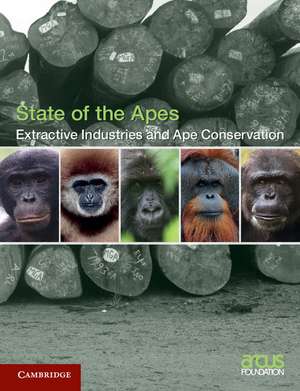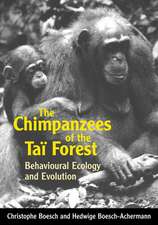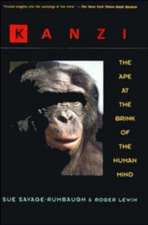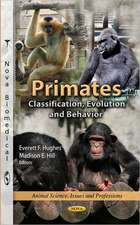Extractive Industries and Ape Conservation: State of the Apes
Autor Arcus Foundationen Limba Engleză Paperback – 26 mar 2014
| Toate formatele și edițiile | Preț | Express |
|---|---|---|
| Paperback (1) | 316.75 lei 6-8 săpt. | |
| Cambridge University Press – 26 mar 2014 | 316.75 lei 6-8 săpt. | |
| Hardback (1) | 701.47 lei 6-8 săpt. | |
| Cambridge University Press – 26 mar 2014 | 701.47 lei 6-8 săpt. |
Preț: 316.75 lei
Nou
Puncte Express: 475
Preț estimativ în valută:
60.61€ • 64.81$ • 50.54£
60.61€ • 64.81$ • 50.54£
Carte tipărită la comandă
Livrare economică 17 aprilie-01 mai
Preluare comenzi: 021 569.72.76
Specificații
ISBN-13: 9781107696211
ISBN-10: 1107696216
Pagini: 377
Ilustrații: 2 b/w illus. 130 colour illus. 23 tables
Dimensiuni: 190 x 247 x 17 mm
Greutate: 0.84 kg
Ediția:New.
Editura: Cambridge University Press
Colecția Cambridge University Press
Seria State of the Apes
Locul publicării:New York, United States
ISBN-10: 1107696216
Pagini: 377
Ilustrații: 2 b/w illus. 130 colour illus. 23 tables
Dimensiuni: 190 x 247 x 17 mm
Greutate: 0.84 kg
Ediția:New.
Editura: Cambridge University Press
Colecția Cambridge University Press
Seria State of the Apes
Locul publicării:New York, United States
Cuprins
Foreword; The Arcus Foundation; Notes to readers; Acknowledgments; Introduction; Part I: 1. From global to local: the megatrends at the interface of apes and industry and the case of trade, law, and finance; 2. Land tenure: industry, ape conservation, and communities; 3. Ecological impacts of extractive industries on ape populations; 4. Avoiding the chainsaws: industrial timber extraction and apes; 5. Mining/oil extraction and ape populations and habitats; 6. Artisanal and small-scale mining and apes; 7. The bigger picture: indirect impacts of extractive industries on apes and ape habitat; 8. Case studies of national responses to the impacts of extractive industries on great apes; Part II: 9. The status of apes across Africa and Asia; 10. Status of captive apes across Africa and Asia: the impact of extractive industry; Annexes; Acronyms and abbreviations; Glossary; References; Index.
Recenzii
'… a very good overview … The authors are experts and the explanations and examples are up-to-date.' Gorilla Journal
'This book is about the consequences that extractive industry is having on the tropical forests of Africa and Asia and the remaining apes that live within them. It is about the local, regional, and national policies that govern the extractive industry and the steps towards mitigation that stakeholders can consider. It has no fairy tale ending; it proposes no silver bullet. Rather, it is an attempt to lay out the consequences of today's resource extraction practices on ape communities and more importantly, encourage a shift towards acceptance that this industry and the environment are inexplicably connected … an important contribution towards identifying both the challenges and potential solutions involved in ape habitat conservation, written by a foundation that is a world leader in safeguarding wild and captive apes … Anyone interested in being familiar with how best to resolve this broader, widespread conflict must read this book.' Alex K. Piel, Primate Eye
'This book is about the consequences that extractive industry is having on the tropical forests of Africa and Asia and the remaining apes that live within them. It is about the local, regional, and national policies that govern the extractive industry and the steps towards mitigation that stakeholders can consider. It has no fairy tale ending; it proposes no silver bullet. Rather, it is an attempt to lay out the consequences of today's resource extraction practices on ape communities and more importantly, encourage a shift towards acceptance that this industry and the environment are inexplicably connected … an important contribution towards identifying both the challenges and potential solutions involved in ape habitat conservation, written by a foundation that is a world leader in safeguarding wild and captive apes … Anyone interested in being familiar with how best to resolve this broader, widespread conflict must read this book.' Alex K. Piel, Primate Eye
Notă biografică
Descriere
Rigorously and objectively examines the evolving context within which great ape and gibbon habitats are increasingly interfacing with extractive industries.













